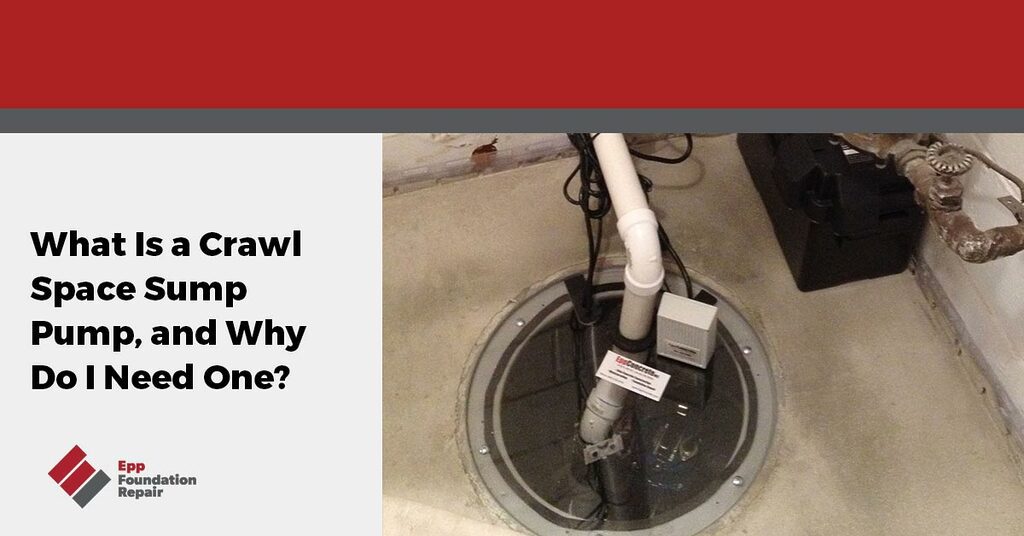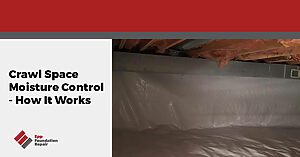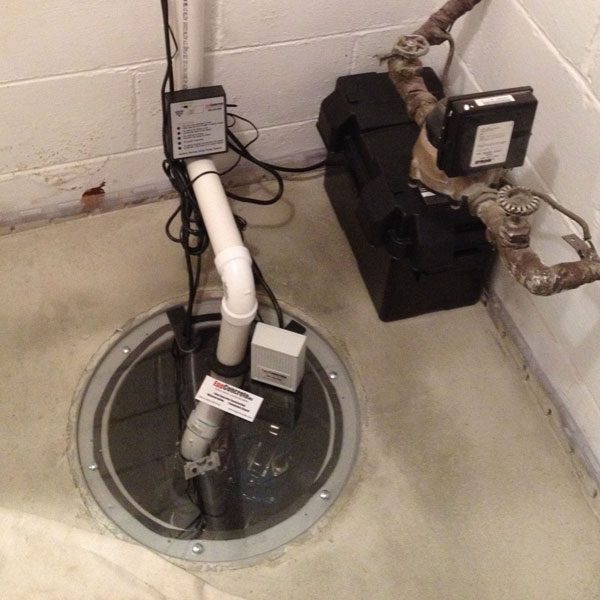
Installing a sump pump in your crawl space is essential in protecting your foundation from water damage and all its associated troubles. By waterproofing your crawl space, you can prevent issues like mold, wood rot, and pest infestations while gaining valuable storage space, peace of mind, and increasing the value of your home.
Let’s discuss what a crawl space and a sump pump are, signs that you might need a sump pump, how a sump pump works, and other ways you can protect your foundation from moisture.
What Is a Crawl Space?
A crawl space is a type of foundation commonly used in residential homes in the Midwest. It is a shallow foundation with an open area, typically between 1.5 to 3 feet in height, beneath the ground floor of a house. It provides just enough space for someone to crawl through, hence the name. The crawl space allows access to plumbing, HVAC systems, and electrical wiring below the home, making it easier to perform maintenance or repairs on these systems.
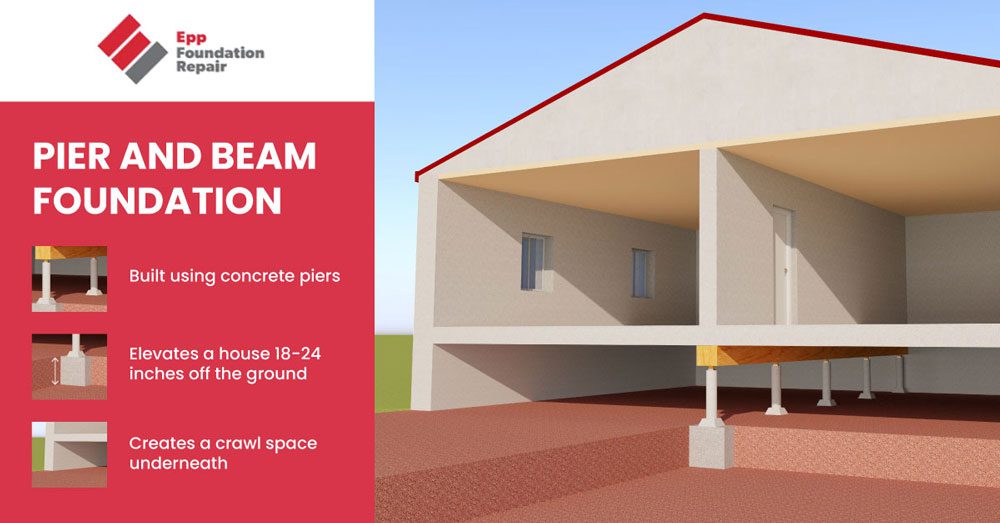
What Is a Crawl Space Sump Pump?
A sump pump is a device located in a home’s crawl space to remove accumulated water in a sump pit. The primary function of a sump pump is to prevent flooding by pumping out excess water and redirecting it away from the foundation of the structure. Sump pumps are essential to protecting a home from water damage and the potential hazards that come with it.
How Do I Know If My Crawl Space Needs a Sump Pump?
Unless you live in an extremely arid region, a sump pump is essential to prevent water damage in your crawl space. You need a sump pump if you notice any of the following signs of moisture in your crawl space.
- Musty Odor – A musty smell is usually an indicator of mold, mildew, or stagnant water.
- Visible Mold or Mildew – Mold and mildew thrive in damp, humid environments and may appear as black, green, or white patches on surfaces such as walls, floor joists, insulation, or subflooring.
- Standing Water – Puddles or standing water in the crawl space indicate water intrusion from sources such as groundwater infiltration or surface runoff.
- Condensation – Condensation on surfaces such as pipes, ductwork, or insulation may indicate high humidity levels in the crawl space.
- Rotting Wood – Moisture can cause wood to rot and decay over time, weakening structural components such as floor joists, beams, and subflooring.
- Rusty Metal – Excess moisture in the crawl space can lead to corrosion and rust formation on metal components such as support beams, ductwork, or plumbing fixtures.
- High Humidity Level – Elevated humidity levels in the crawl space can promote mold growth, wood rot, and other moisture-related issues.
- Damp Insulation – Damp insulation or other building materials in the crawl space indicate moisture infiltration from sources such as groundwater, plumbing leaks, or inadequate drainage.
- Insect Infestations – Moist environments in crawl spaces provide ideal conditions for insect infestations, including termites, carpenter ants, and wood-boring beetles.
What Are the Benefits of a Sump Pump in My Crawl Space?
There are many benefits of installing a sump pump in your crawl space, including:
- Efficient water removal – A sump pump protects your crawl space from flooding and damage by directing water a safe distance from your foundation.
- Durable and reliable – A well-maintained sump pump typically lasts seven to ten years. It works automatically to mitigate water damage, even when the power is out (so long as it is attached to a backup battery).
- Prevent mold – By effectively and reliably preventing water buildup in your crawl space, you can prevent mold growth that can eventually spread to your home and cause health concerns and expensive repairs.
- Protects your foundation – Water accumulation in a crawl space can weaken the structural integrity of the home’s foundation, support beams, and floor joists. By preventing water from pooling or saturating the soil beneath the house, a sump pump helps maintain the stability and strength of these structural components, reducing the risk of costly repairs or foundation damage.
- Mitigates pest infestations – By controlling moisture levels and reducing standing water, a sump pump can help deter pest infestations and protect the home from structural damage caused by wood-destroying insects.
- Enhances property value – A dry, well-maintained crawl space can improve a home’s overall value and marketability.
How Does a Sump Pump in a Crawl Space Work?
There are different types of sump pumps, and they each work a bit differently. However, the typical crawl space sump pump works like this:
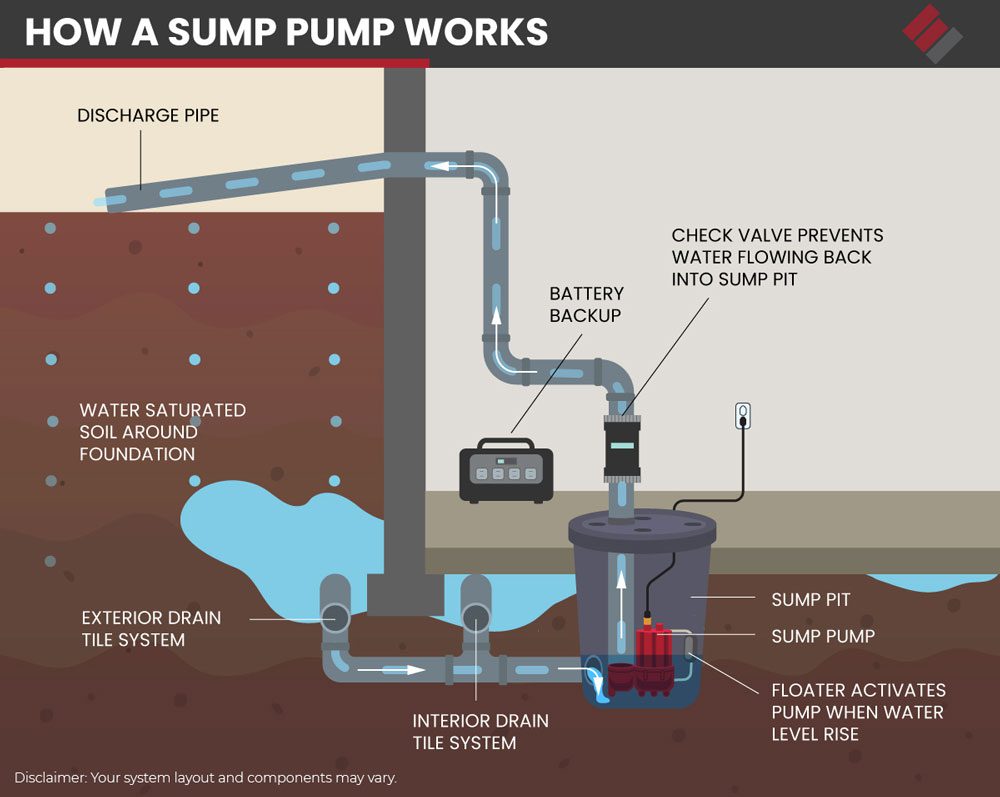
- Sump Pit – A sump pit, also known as a sump basin or sump well, is a small pit or reservoir dug into the lowest part of a crawl space. It collects water that enters the space, typically through a drainage system like drain tile.
- Pump Mechanism – The sump pump is typically installed inside the sump pit and is equipped with a motor, impeller, and float switch. When water in the sump pit reaches a certain level, the float switch activates the pump, signaling it to start pumping water out of the pit.
- Water Removal – The pump’s impeller rapidly spins, creating a suction force that draws water into the pump and through a discharge pipe or hose. The water is then expelled from the pump and directed away from the building’s foundation through a discharge pipe.
- Automatic Operation – Many sump pumps have automatic switches that activate the pump when water levels rise above a predetermined threshold and deactivate it when water levels recede. An automatic switch ensures continuous operation and helps prevent flooding even when you are not home.
- Backup Power – To ensure reliable operation during power outages, some sump pumps have backup power sources, such as battery backups or generators. These backup systems can provide power to the pump during emergencies and help prevent flooding during power failures.
Are There Other Ways to Protect My Crawl Space from Water Damage?
Absolutely! Aside from installing a drain tile system and a sump pump, consider the following options:
- Install a crawl space vapor barrier – A vapor or moisture barrier prevents moisture from the soil from seeping into your crawl space.
- Install a dehumidifier – A dehumidifier will actively remove moisture from the air and prevent condensation.
- Ensure you have an efficient gutter system – Keep your gutters free of debris and install downspout extensions to prevent water from accumulating near your foundation.
- Regrade your yard – Make sure that your yard slopes away from your home so that water does not pool around your home.
- Install a French drain – A French drain collects water from your yard and directs it away from your home, preventing your crawl space from flooding.
- Avoid landscaping too close to the home – This will prevent the need for watering plants close to your foundation and risking moisture in your crawl space.
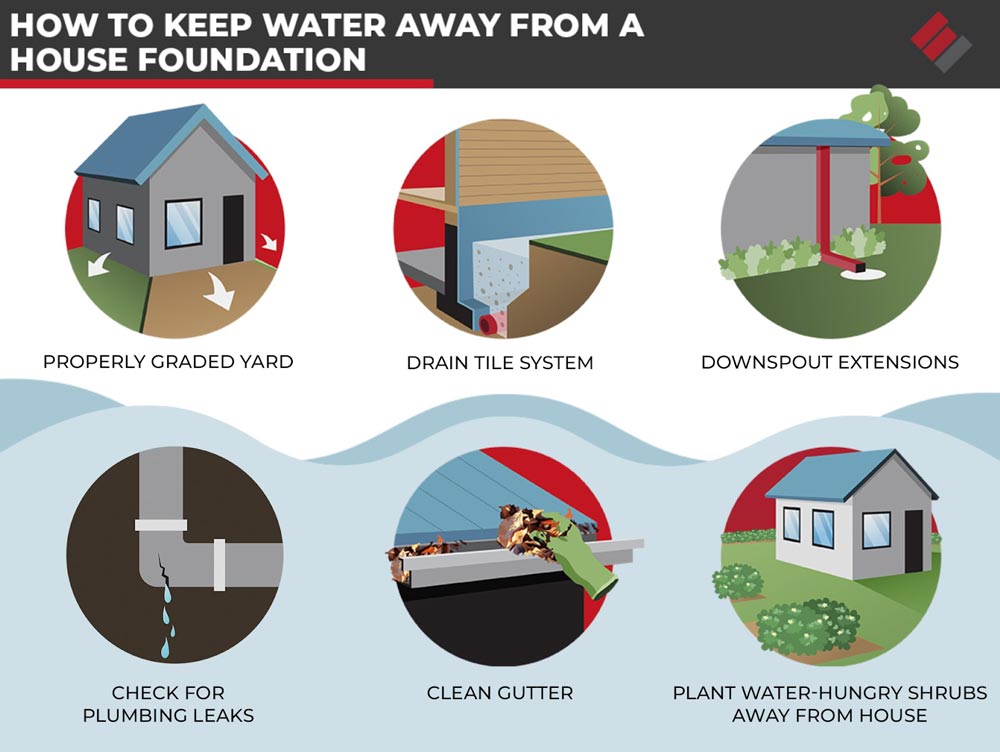
If you want to protect your home and your family by waterproofing your crawl space, schedule an appointment with our experts today. We specialize in crawl space encapsulation and waterproofing solutions, including installing drainage and sump pump systems. We service Lincoln, Omaha, Grand Island, Kearney, Nebraska, Missouri, Iowa, and parts of Northeastern Kansas.

